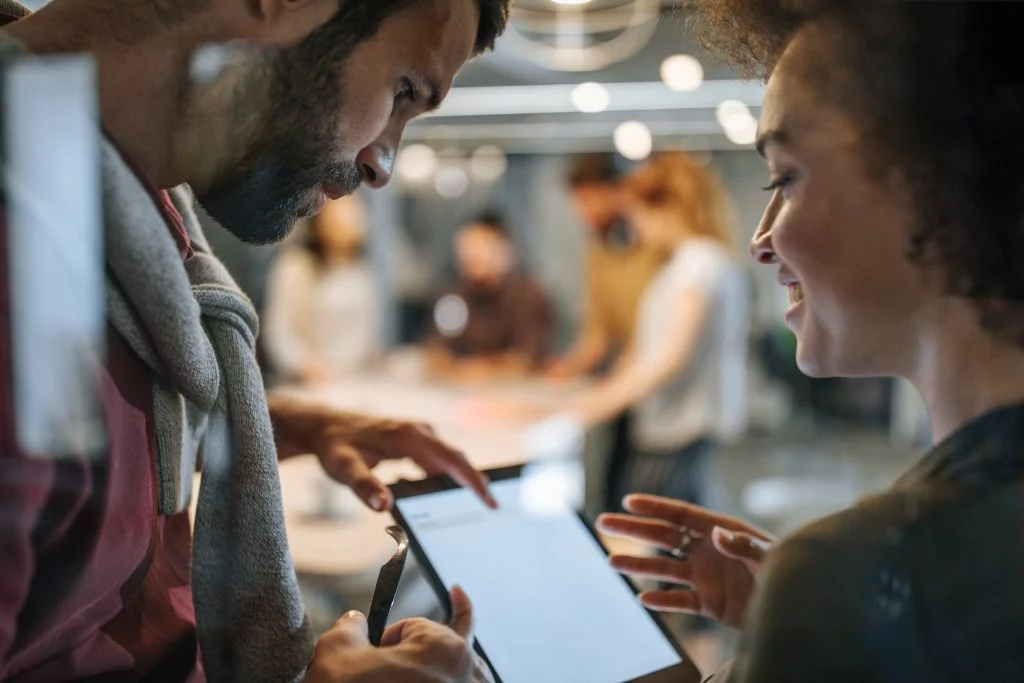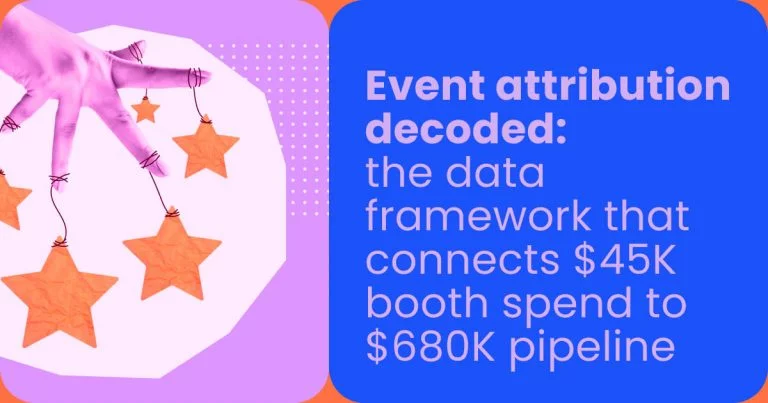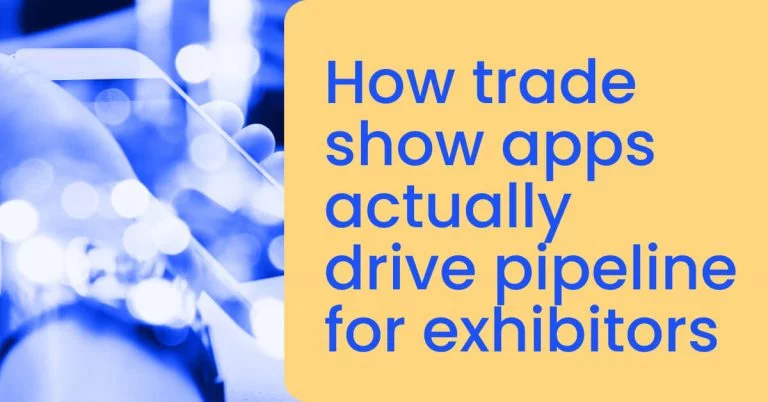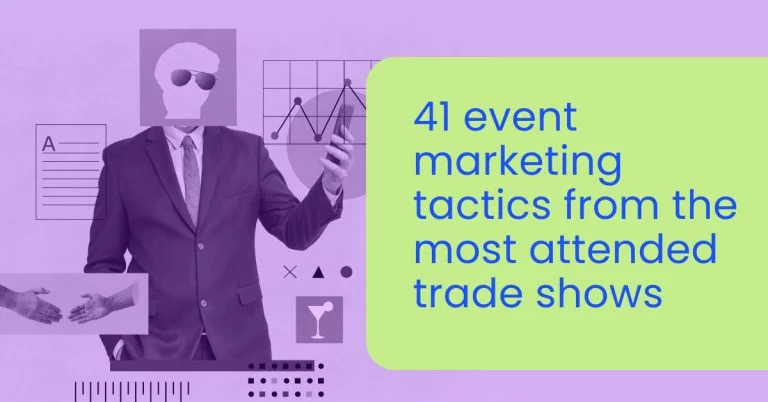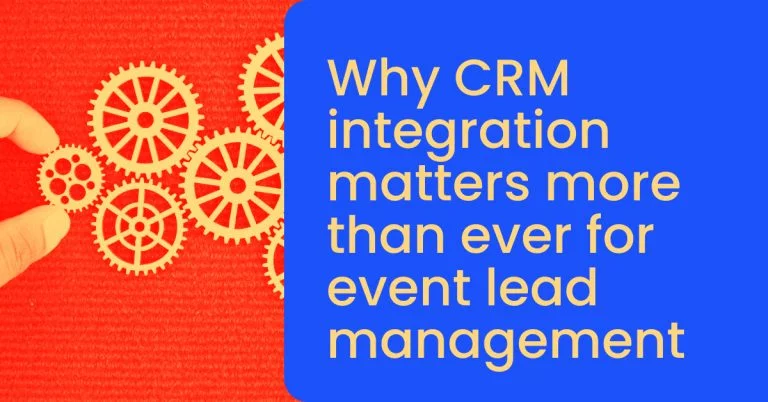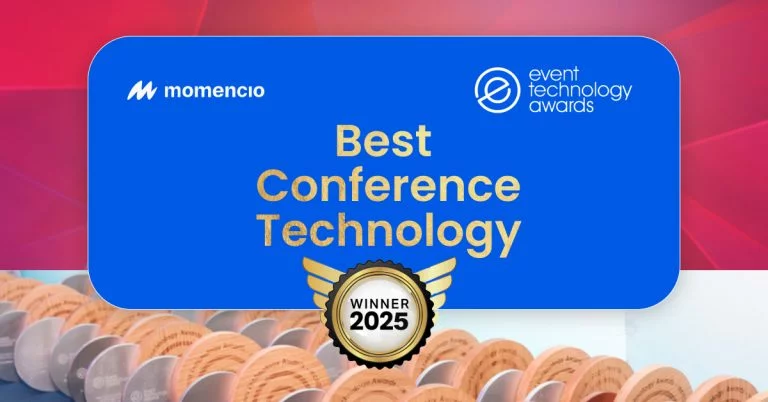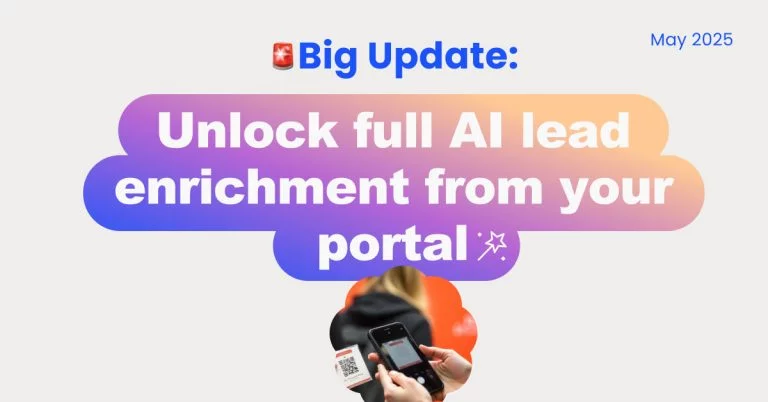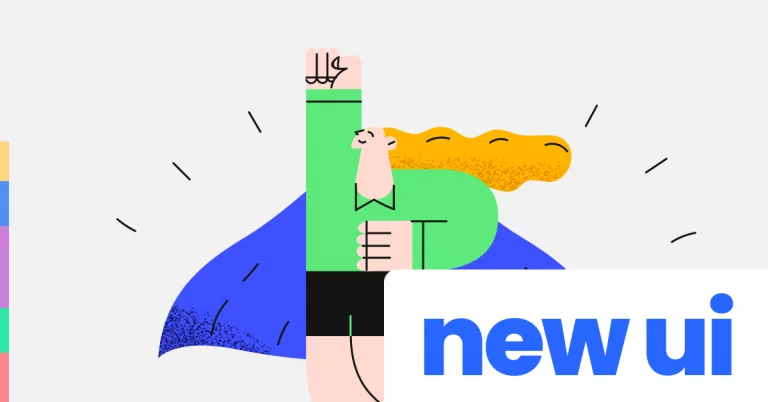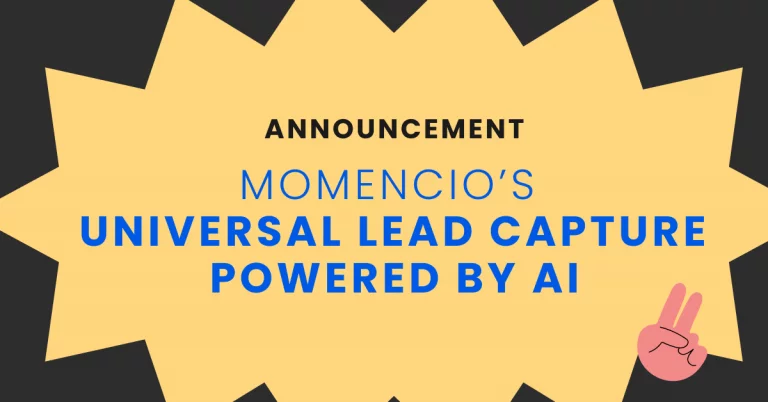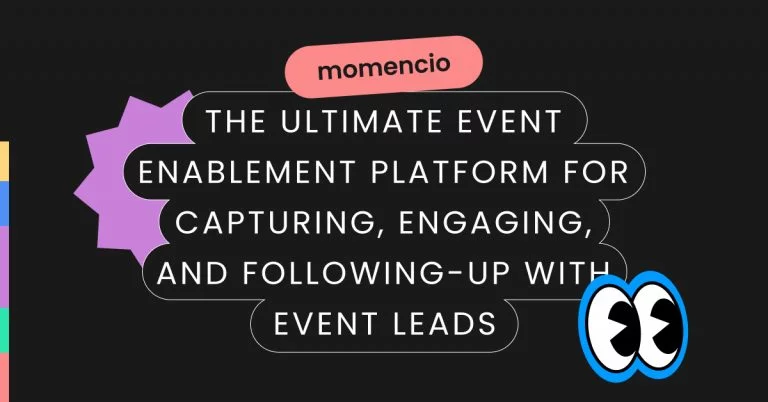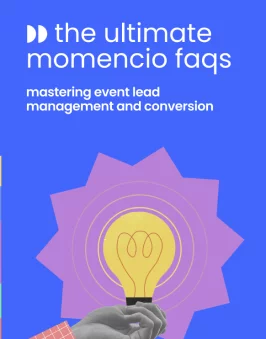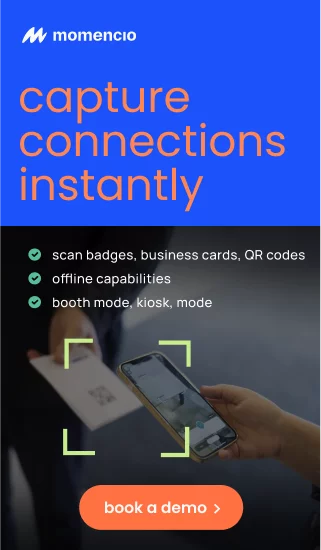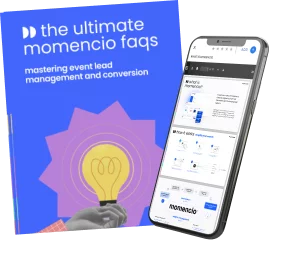Emails play a vital role in converting event leads into paying customers, especially when the focus is on post-event follow-ups. The work does not end after the event — in fact, it is just beginning. 76% of event marketers consider email marketing the most targeted channel to increase attendee registration, with effective follow-up campaigns translating into higher sales conversions.
For event professionals managing B2B events, the challenge often lies in keeping the momentum going. Without a structured post-event follow-up strategy, it is easy to let potential leads slip through the cracks. But with the right approach, your follow-up emails can nurture relationships and drive post-event sales.
In this article, we will outline ten powerful email marketing strategies to maximize your post-event follow-ups. Each of these tactics has been designed to help you engage your leads, provide value, and ultimately convert them into loyal customers. With personalized messaging, smart segmentation, and timely outreach, your email marketing can become the engine driving your post-event success. Let us dive in.
Why post-event follow-ups are critical for sales
The post-event follow-up is a pivotal phase in the sales cycle for event professionals, particularly in B2B marketing. During an event, you collect leads, build relationships, and create engagement opportunities. However, without proper follow-up, these efforts can quickly fizzle out. According to Salesforce, 63% of prospects who inquire about information at an event do not make an immediate purchasing decision. This statistic highlights the importance of nurturing those leads after the event.
A well-timed and carefully crafted post-event follow-up can significantly increase your chances of converting leads into sales. It reinforces the connection made at the event, keeps your brand top-of-mind, and gives you the opportunity to provide additional value through relevant content and offers. It is also a chance to respond to questions, address concerns, and guide leads down the sales funnel.
Moreover, follow-ups help you stand out among competitors. With countless brands vying for attention at an event, it is the consistent follow-up strategy that often makes the difference in securing a deal. Successful post-event communication demonstrates that you are invested in the potential client’s success, and it establishes trust — a key component in closing sales. Therefore, integrating strategic email follow-ups into your post-event plan is not just advisable; it is crucial for maximizing your event’s ROI.
Strategy #1 – Segment your audience for targeted follow-ups
One of the most effective ways to make your post-event follow-up emails stand out is to segment your audience. According to Mailchimp, segmented campaigns lead to a 14.31% higher open rate and a 101% increase in clicks. By breaking down your event attendees into specific groups based on their behaviors, preferences, and level of engagement during the event, you can tailor your follow-up content to address their unique needs.
For example, attendees who visited your booth multiple times should receive a different follow-up than those who simply dropped by for a quick chat. Those who attended specific sessions or showed interest in particular products should receive personalized emails that speak directly to those interests. Segmentation can be based on several criteria:
- Engagement level: Did they attend multiple sessions or request additional information?
- Job role and industry: Tailor the content to the specific challenges faced by their industry or position.
- Event activity: What products or services did they show the most interest in?
By personalizing your follow-ups through segmentation, you demonstrate that you remember your interaction with them, making your emails more relevant and likely to convert.
Pro Tip: Utilize your event management platform to capture detailed information about attendees’ behaviors and interests during the event. Tools like momencio can help you easily segment captured leads and personalize follow-ups based on real-time data collected during the event.
Strategy #2 – Personalize your emails based on event interactions
Personalization goes beyond just addressing the recipient by their first name. According to research by Epsilon, 80% of consumers are more likely to make a purchase when brands offer personalized experiences. For event marketers, the opportunity to personalize follow-up emails based on attendee interactions is enormous.
To get this right, consider the following personalization techniques:
- Tailor the content to their event behavior: Reference specific sessions they attended, products they inquired about, or any notes you took during your conversation. This shows that you are paying attention and catering to their interests.
- Incorporate data from badge scans or surveys: If your team utilized lead capture technologies, use that data to deliver relevant content. For instance, if someone interacted with a particular product demo, include a follow-up link to more detailed product information or a demo video.
- Offer additional resources: If they showed interest in a specific area of your business, follow up with a whitepaper, case study, or webinar that deepens their understanding of your solution.
The more relevant your email feels, the better your chances of keeping their attention and moving them further along in the sales journey.
Strategy #3 – Leverage marketing automation for consistent engagement
For event sales reps managing large-scale events or hybrid formats, manually following up with every lead is nearly impossible. This is where marketing automation becomes a game changer. According to Marketo, companies using marketing automation see 53% higher conversion rates and a 3.1% higher revenue from their marketing efforts.
Using marketing automation tools, you can:
- Create a drip campaign: Set up a sequence of emails that are automatically sent at predetermined intervals after the event. Each email in the series can deliver progressively more valuable content — starting with a simple “thank you” and gradually moving to product offers or calls to action.
- Trigger emails based on behavior: For example, if a lead clicks a link in your initial follow-up email, the system can automatically send them a follow-up with more information on the product or service they engaged with.
- Schedule emails at optimal times: Automation tools allow you to track when recipients are most likely to open and engage with your emails, ensuring your messages land at the right time.
Automation helps maintain consistent engagement, prevents leads from going cold, and frees up time for your team to focus on more personalized touchpoints.
Tip: Look for platforms that integrate well with CRM tools, such as Salesforce or HubSpot, to ensure seamless data flow between your email campaigns and sales outreach.
Strategy #4 – Use event content as a follow-up tool
Repurposing content from your event into follow-up material is an excellent way to provide continued value and remind your leads of the insights they gained during the event. Content can include:
- Session recordings: Send links to the sessions they attended, along with related sessions they might find interesting.
- Slide decks or presentations: Share downloadable presentations from speakers to reinforce key takeaways.
- Exclusive event highlights: Compile a highlights reel or blog post summarizing the most critical discussions and industry trends presented during the event.
This type of content not only serves as a reminder of the valuable information shared but also provides your leads with an easy way to justify their time spent at your event to their superiors or decision-makers.
Strategy #5 – Time your follow-up emails strategically
Timing is crucial when it comes to post-event follow-ups. Sending your emails too soon may result in the lead feeling overwhelmed, while waiting too long could lead to a loss of momentum. Research shows that the ideal time to send a follow-up email is within 24 to 48 hours after the event. According to HubSpot, businesses that follow up within this window see a 25% higher response rate than those who delay.
Here’s a breakdown of how to structure your follow-up cadence:
- First 24 hours: Send a thank-you email that acknowledges their attendance and reiterates the value of the event. You can also include any promised resources or links to key event highlights.
- 3-5 days post-event: Follow up with additional content, such as session recordings, product information, or relevant blog posts. This second touchpoint helps maintain engagement and keeps your brand top of mind.
- 1-2 weeks later: If they have not responded or engaged, send a reminder email offering something of added value, such as a demo, a free trial, or a one-on-one consultation.
The timing of these emails should align with the type of event you hosted. For example, a one-day workshop may require a quicker follow-up timeline, while a multi-day conference could allow for a slightly longer interval between emails.
Pro Tip: Use your email marketing platform to monitor open rates, clicks, and other engagement metrics. This data will help you fine-tune the timing of future campaigns and increase their effectiveness.
Strategy #6 – Offer exclusive post-event deals
One of the most effective ways to incentivize your event leads to take action is by offering exclusive post-event deals. After an event, attendees are often looking for ways to apply what they have learned or continue exploring products and services that sparked their interest. A limited-time offer can nudge them toward making a purchase decision.
Examples of post-event deals include:
- Discounts on services: Offer a 10-20% discount on your services for leads who attended the event, valid for a limited time (e.g., 30 days post-event).
- Extended free trials: If you offer a software or SaaS product, provide an extended free trial exclusively for event attendees, such as a 30-day trial instead of the standard 14 days.
- Bundled packages: Create a package deal that includes multiple products or services at a reduced rate for attendees who act within a set timeframe.
Make sure to clearly communicate the urgency of the offer by including deadlines and highlighting the exclusivity of the deal. Limited-time offers drive urgency and prompt leads to make decisions faster.
Bonus Tip: Use countdown timers in your email to visually emphasize the time-sensitive nature of the offer, encouraging quicker responses from leads.
Strategy #7 – Include interactive elements in your emails
Interactive emails can significantly boost engagement rates by offering your leads a chance to take action within the email itself. Event leads are often more responsive when there is an interactive element that encourages them to participate, learn more, or provide feedback.
Consider incorporating these interactive elements into your follow-up emails:
- Polls and surveys: Ask for feedback about the event or their interest in specific products. This not only keeps them engaged but also provides you with valuable insights for future follow-ups.
- Quizzes: Create a quiz related to the topics discussed at the event. For example, if you hosted a session on event technology, you could include a “Which event tech solution is right for you?” quiz to engage the recipient and guide them toward relevant products.
- Embedded videos: Video content is more engaging and can help break through the noise of a crowded inbox. Include a brief event recap video or a product demo directly in the email to maintain engagement.
- Clickable buttons: Encourage leads to take the next step, whether it is scheduling a demo, downloading a whitepaper, or signing up for a webinar. Clear and visually striking buttons improve click-through rates.
By making your follow-up emails more interactive, you give recipients more reasons to engage with your content and continue the conversation.
Did you know? Interactive emails can increase click-to-open rates by 73%.
Strategy #8 – Craft compelling subject lines that boost open rates
Your follow-up emails will not matter if no one opens them, which is why the subject line is one of the most critical elements of your email marketing strategy. 47% of email recipients decide whether to open an email based on the subject line alone.
When crafting your subject lines, aim for clarity, curiosity, and relevance. Here are a few types of subject lines that can significantly boost open rates:
- Personalized subject lines: Including the recipient’s name or referencing their specific event experience can grab their attention. For example, “John, we loved meeting you at [Event Name] — here’s what’s next.”
- Question-based subject lines: Questions pique curiosity and encourage the recipient to open the email to find out more. Examples include “Ready to take the next step after [Event Name]?” or “Did you miss these key insights from [Event Name]?”
- Urgency-focused subject lines: Use urgency to push recipients toward immediate action. For example, “Last chance to claim your exclusive offer!” or “Only 2 days left to access your free trial.”
- Value-driven subject lines: Clearly communicate the benefit they will receive by opening the email. Example: “Unlock your [Exclusive Offer] from [Event Name] now.”
Testing different variations of subject lines can help you identify what resonates best with your audience. A/B testing is a valuable tool for optimizing open rates and ensuring your follow-up emails reach their intended audience.
Strategy #9 – Utilize behavioral triggers for follow-up sequences
Behavioral triggers are one of the most effective ways to deliver highly relevant and timely follow-up emails. By tracking your leads’ behaviors during and after the event, you can set up email sequences that are triggered by specific actions, ensuring that your emails are not only timely but also contextually relevant.
For example:
- Action-based triggers: If a lead clicks on a product demo link in one of your emails, you can automatically send a follow-up offering more in-depth information about that product or an invitation to a personalized demo.
- Engagement-based triggers: Leads who open your emails but do not take further action can be placed into a different sequence designed to re-engage them with fresh content or new offers.
- Inactivity triggers: If a lead has not engaged with any follow-ups after the event, you can trigger a final “last chance” email offering an exclusive deal or inviting them to reconnect with your sales team.
Behavioral triggers allow for precise targeting, ensuring that your follow-up emails are always relevant to the recipient’s level of interest and engagement.
Strategy #10 – Align your email marketing with sales outreach
A seamless handoff from marketing to sales is essential for turning event leads into paying customers. Your post-event email marketing should not exist in isolation; it should work in harmony with your sales team’s outreach efforts to ensure leads receive consistent messaging and follow-ups from both departments.
Here are some ways to align your email marketing with sales outreach:
- Shared CRM access: Make sure both marketing and sales teams have access to the same CRM, where all lead data and interactions are stored. This ensures sales reps are aware of every email touchpoint and can follow up accordingly.
- Sales and marketing meetings: Regular post-event meetings between sales and marketing teams can help ensure alignment on messaging, follow-up timing, and next steps for high-priority leads.
- Lead scoring and prioritization: Use lead scoring to prioritize leads based on their engagement with your emails. This helps sales teams focus their efforts on the most promising prospects, while marketing continues to nurture less-engaged leads.
By aligning your post-event email marketing strategy with your sales outreach, you create a unified follow-up process that keeps leads engaged and steadily moving through the sales funnel.
How to use event data to crush your follow-ups and close more deals
To truly maximize the effectiveness of your post-event follow-up strategy, your secret weapon is event data. In a world where personalization is key to engagement, leveraging real-time data captured during events can dramatically improve how you connect with leads after the event ends.
At in-person and hybrid events, the interactions you have with prospects provide a goldmine of insights that can inform your follow-up approach. But manually tracking every conversation, booth visit, and session attendance is nearly impossible without the right tools. This is where an event tech solution like momencio comes in — enabling event marketers to seamlessly capture, analyze, and act on lead data to crush their follow-up game and close more deals.
Here’s how you can use event data to sharpen your post-event follow-ups:
- Capture every lead touchpoint in real time: With momencio, you can gather detailed insights on every interaction during the event, from booth visits to session attendance. This data goes beyond just contact information; it captures behavior patterns, content interactions, and lead scores, helping you determine which leads are most engaged and ready for a follow-up.
Learn how to capture actionable lead data with momencio.
- Segment your leads based on event interactions: After capturing the data, you can segment your audience based on the actions they took during the event. Attendees who participated in specific sessions, engaged deeply with your booth, or requested a demo deserve different follow-ups compared to those who were less involved. Tailoring your emails to their event behavior ensures that your message resonates and feels relevant.
Top 10 methods to convert event leads to clients
- Automate personalized follow-ups at scale: Using the data you collect, momencio allows you to automate personalized email sequences that reflect each lead’s unique journey. For instance, a lead who showed interest in a product demo could automatically receive a follow-up with deeper product information, while another lead who attended a particular session could be sent related resources or case studies. This automation ensures consistency while keeping your follow-ups personalized and timely.
Top 5 post-event engagement mistakes event planners make and how to avoid them
- Leverage real-time analytics to improve your strategy: The work does not stop after sending the follow-ups. With momencio’s real-time analytics, you can track how leads engage with your emails and follow-up content. This insight allows you to adjust your strategy on the fly, making improvements based on what is working and what is not. For example, if a certain email is seeing low engagement, you can quickly tweak the subject line or offer based on live feedback.
5 post-event lead analysis best practices for small businesses
- Seamless CRM integration for sales handoff: Finally, integrating momencio with your CRM ensures that every lead, interaction, and follow-up is tracked and visible to your sales team. This alignment between marketing and sales eliminates gaps in communication, ensuring that your follow-up efforts turn into meaningful conversations and closed deals. Sales teams can jump in with a complete view of the lead’s event journey and tailor their outreach accordingly.
Pro Tip: By using the right event data and automation tools, you can scale your follow-up efforts without losing the personal touch that leads expect. Platforms like momencio not only save you time but also ensure every follow-up is targeted, relevant, and most importantly, effective at closing deals.
By crushing your follow-up game through data-driven strategies, you turn what might otherwise be a missed opportunity into a high-converting sales pipeline.
Conclusion
A well-structured post-event follow-up strategy is key to converting event leads into loyal customers. By segmenting your audience, personalizing content, leveraging marketing automation, and timing your emails strategically, you can maximize the impact of your follow-up efforts. Additionally, incorporating exclusive offers, interactive elements, and behavioral triggers into your campaigns can drive higher engagement and faster conversions.
Ultimately, the success of your follow-up strategy will depend on how well you align it with your sales efforts. A seamless collaboration between marketing and sales will ensure that every lead is nurtured and pursued effectively.
FAQs
- How soon should I follow up with leads after an event?
- Follow up within 24 to 48 hours of the event for maximum impact. This timeframe ensures your brand is still fresh in the minds of attendees.
- What should be included in a post-event follow-up email?
- Your email should include a personalized greeting, a recap of the event or session they attended, relevant resources, and a clear call-to-action, such as scheduling a demo or accessing additional content.
- How can I ensure my follow-up emails are opened?
- Craft compelling subject lines, personalize the content based on event interactions, and ensure your email offers value through exclusive deals or helpful resources.
- Should I use automation for post-event follow-up emails?
- Yes, automation allows you to send timely, consistent emails without overwhelming your team. It also helps ensure no lead is left behind.
- How can I integrate post-event follow-ups with sales outreach?
- Align your CRM systems, conduct regular meetings between marketing and sales teams, and use lead scoring to prioritize follow-up efforts.

